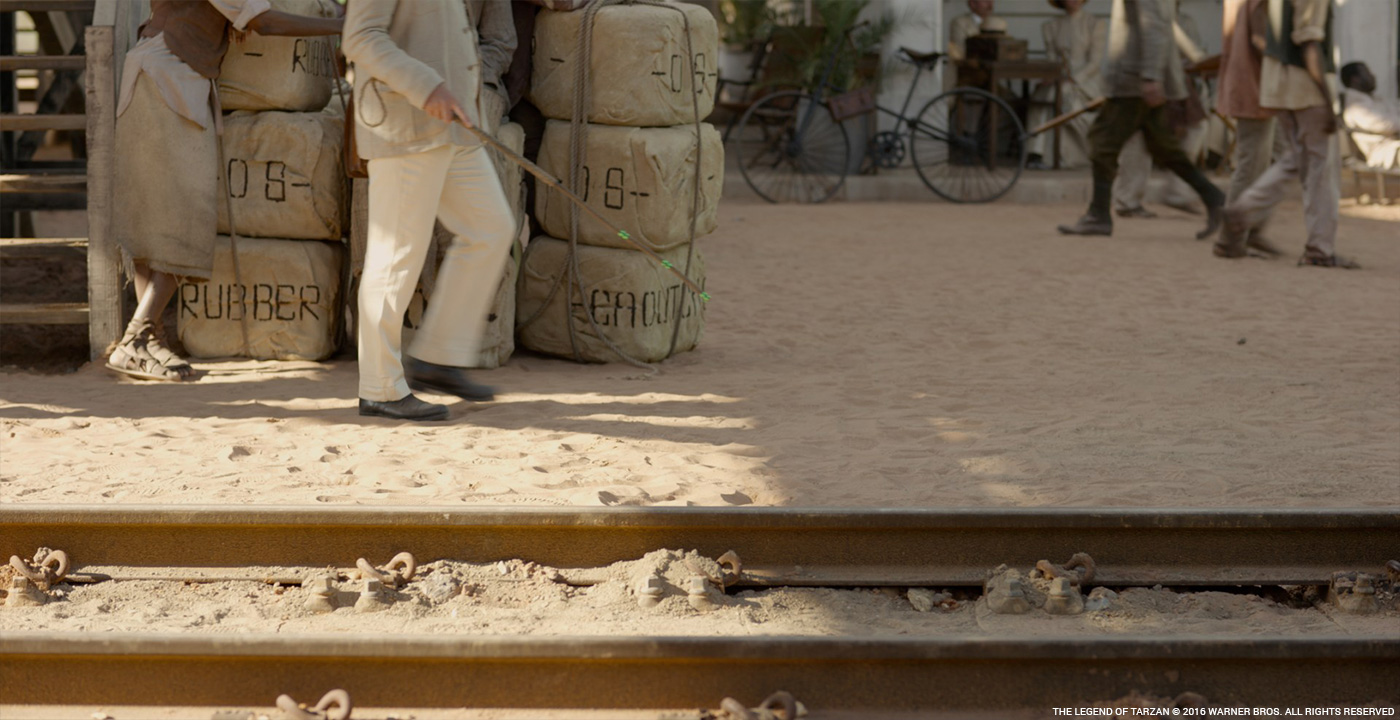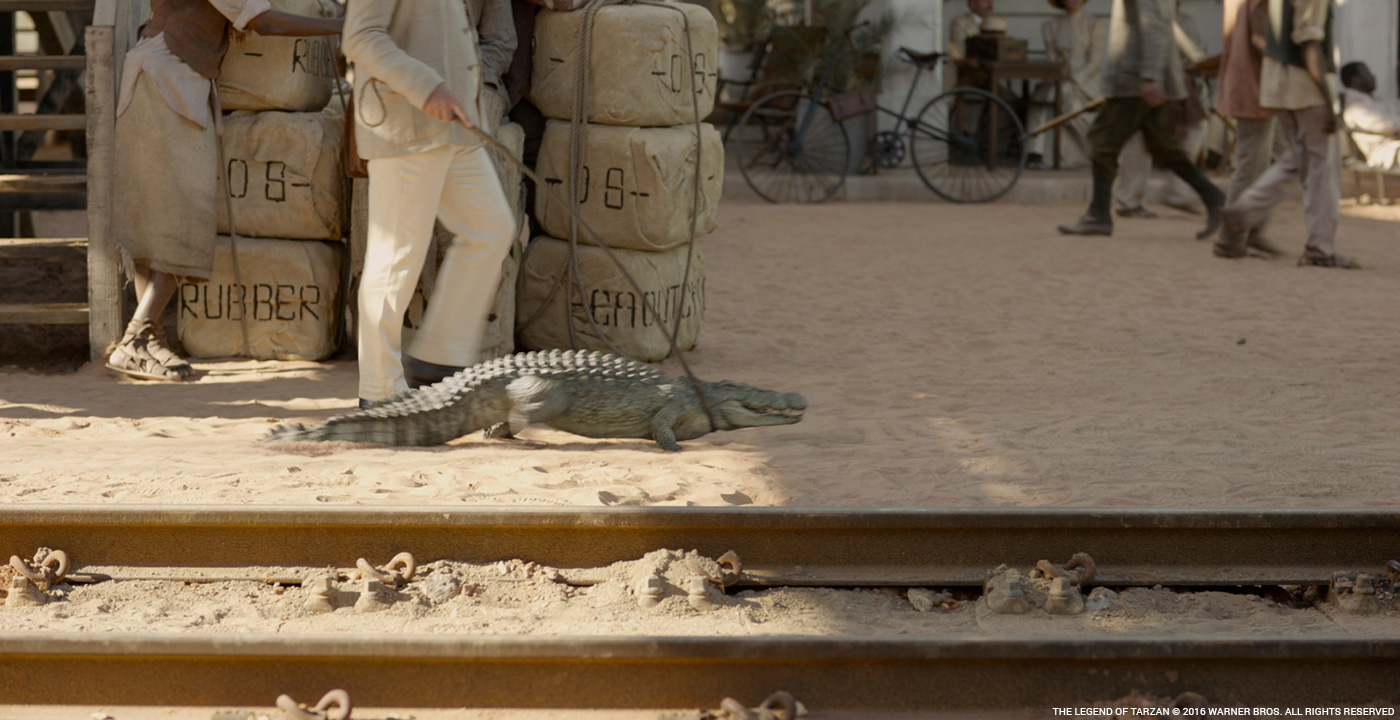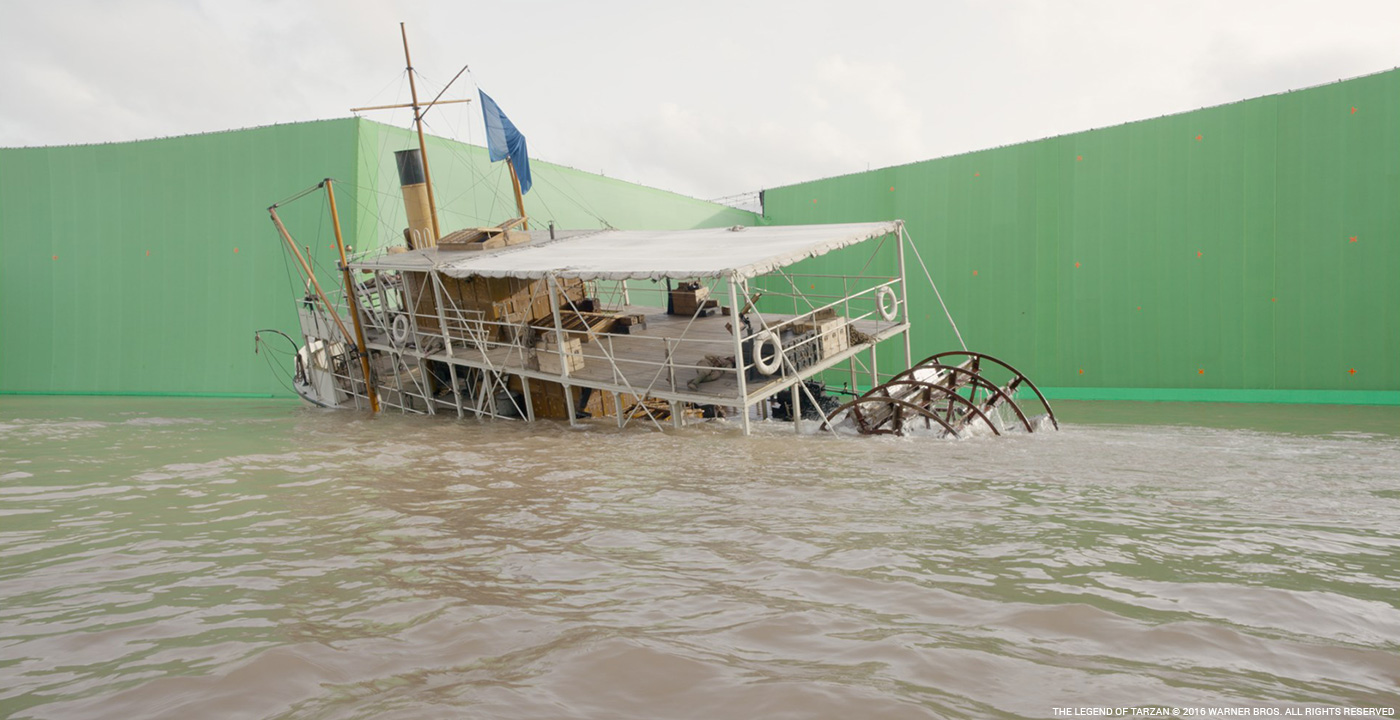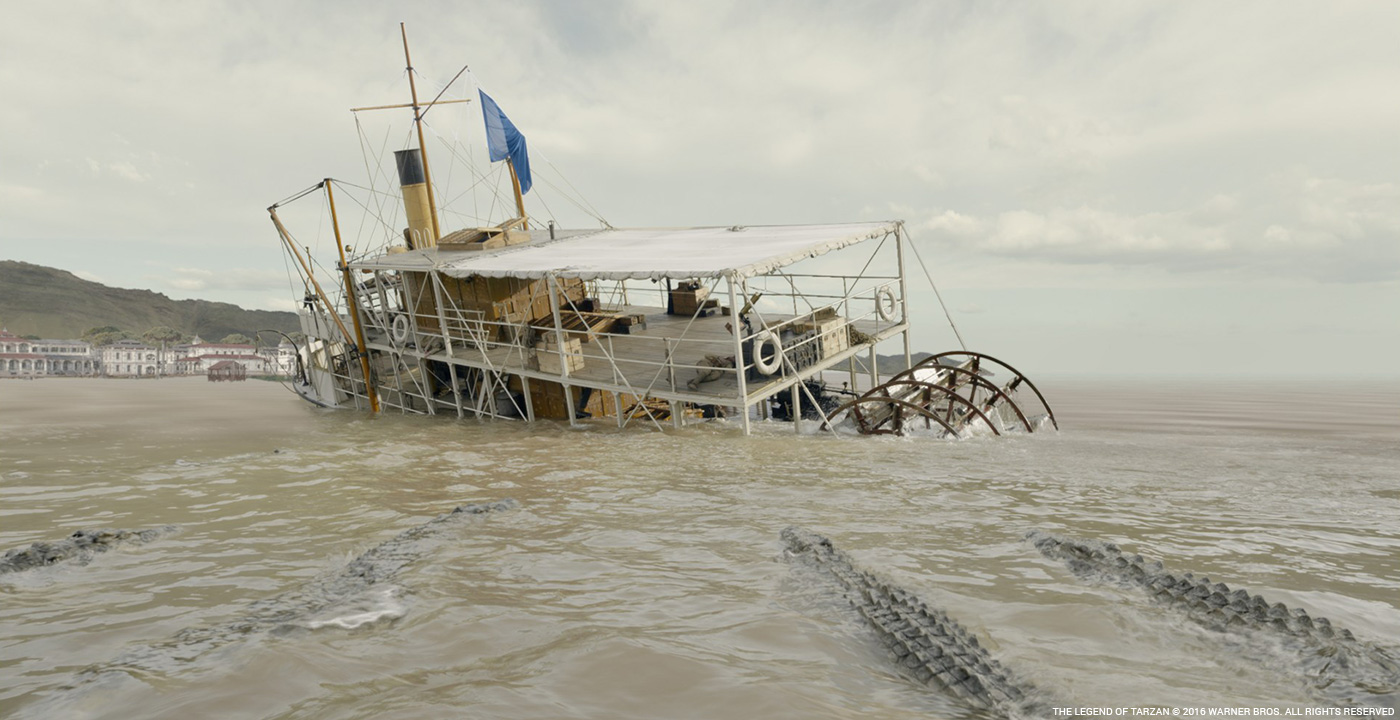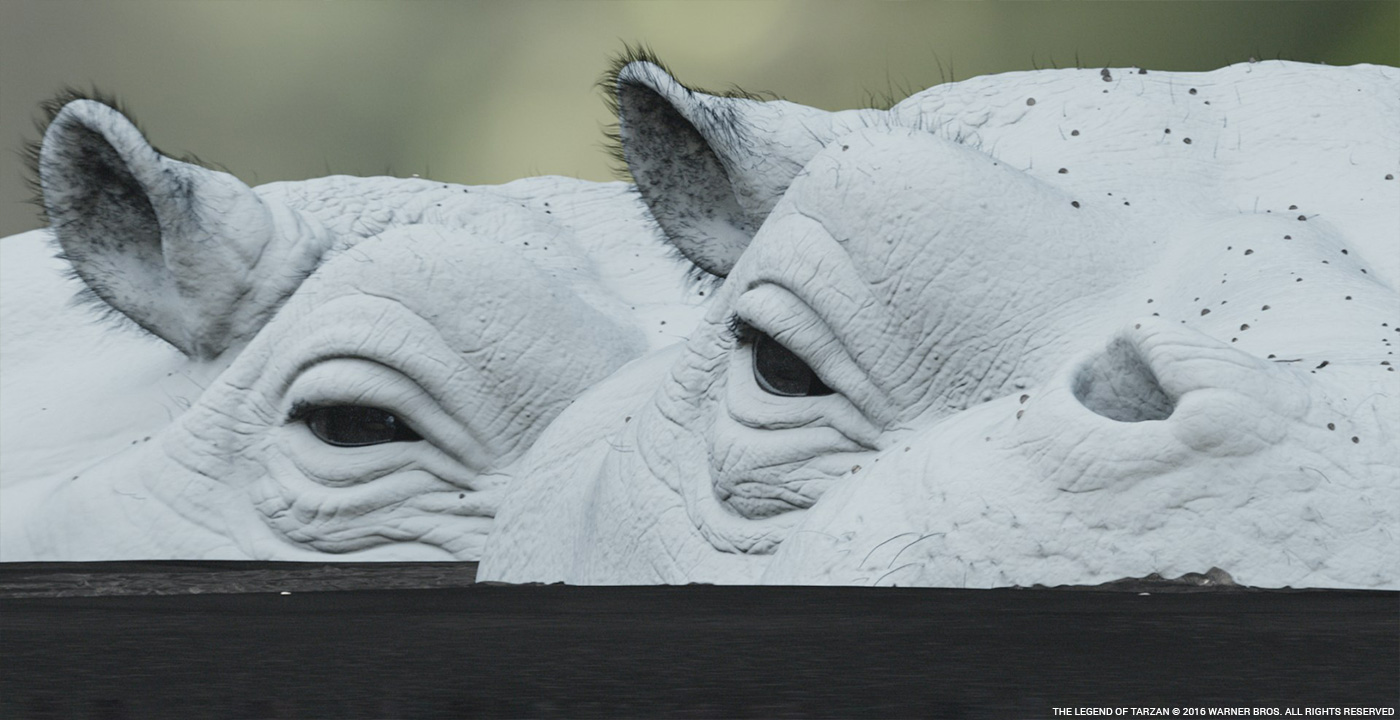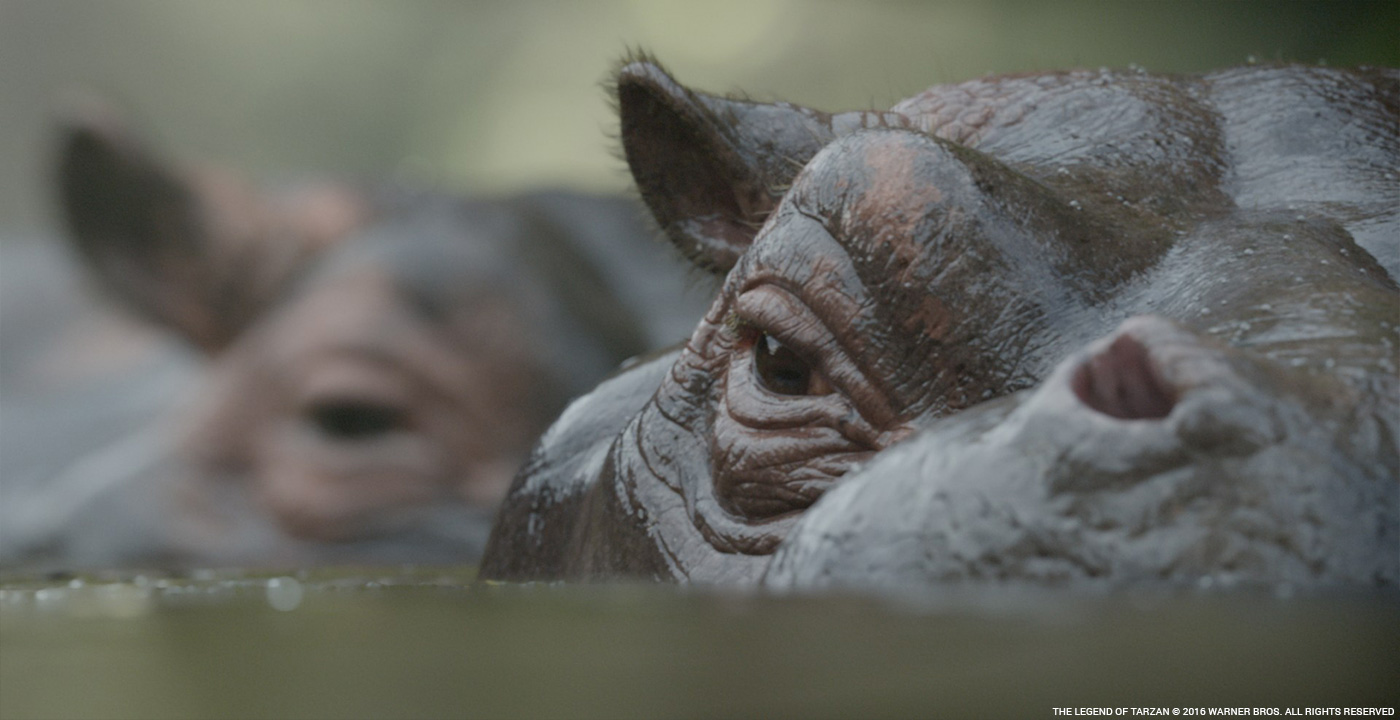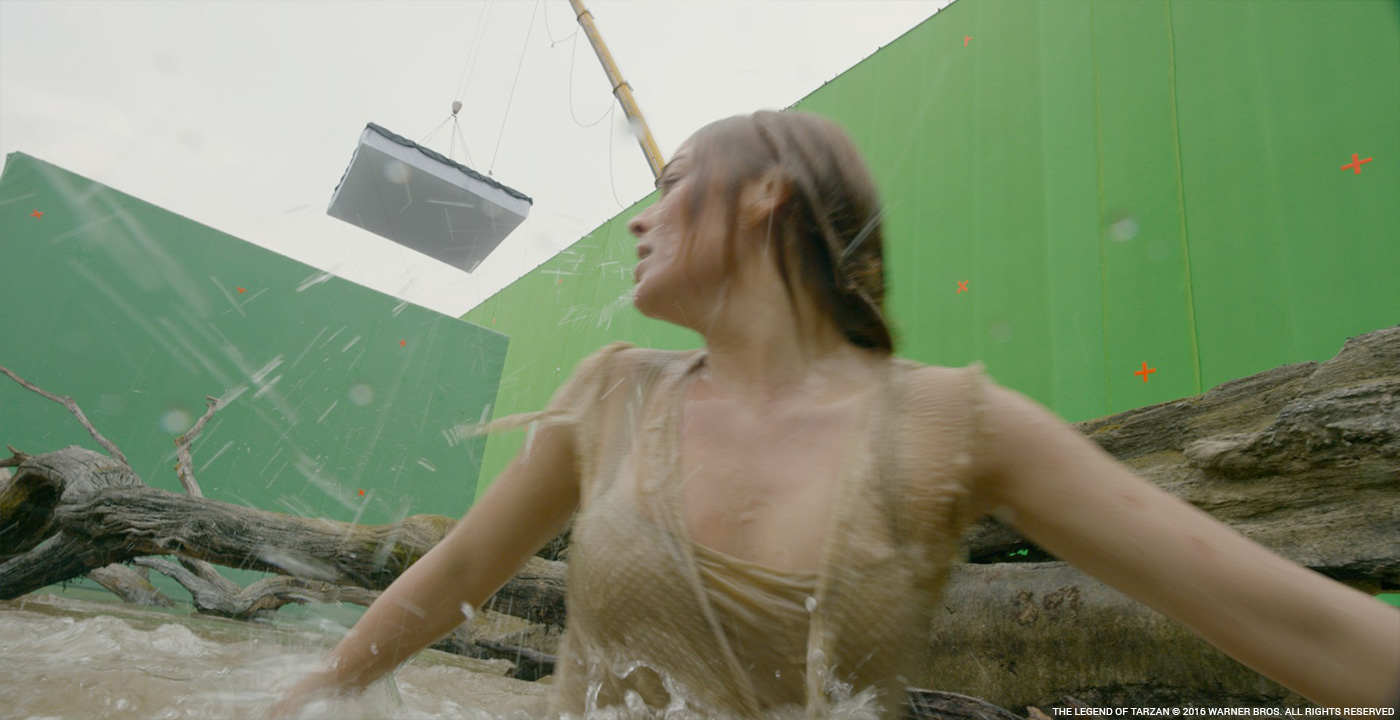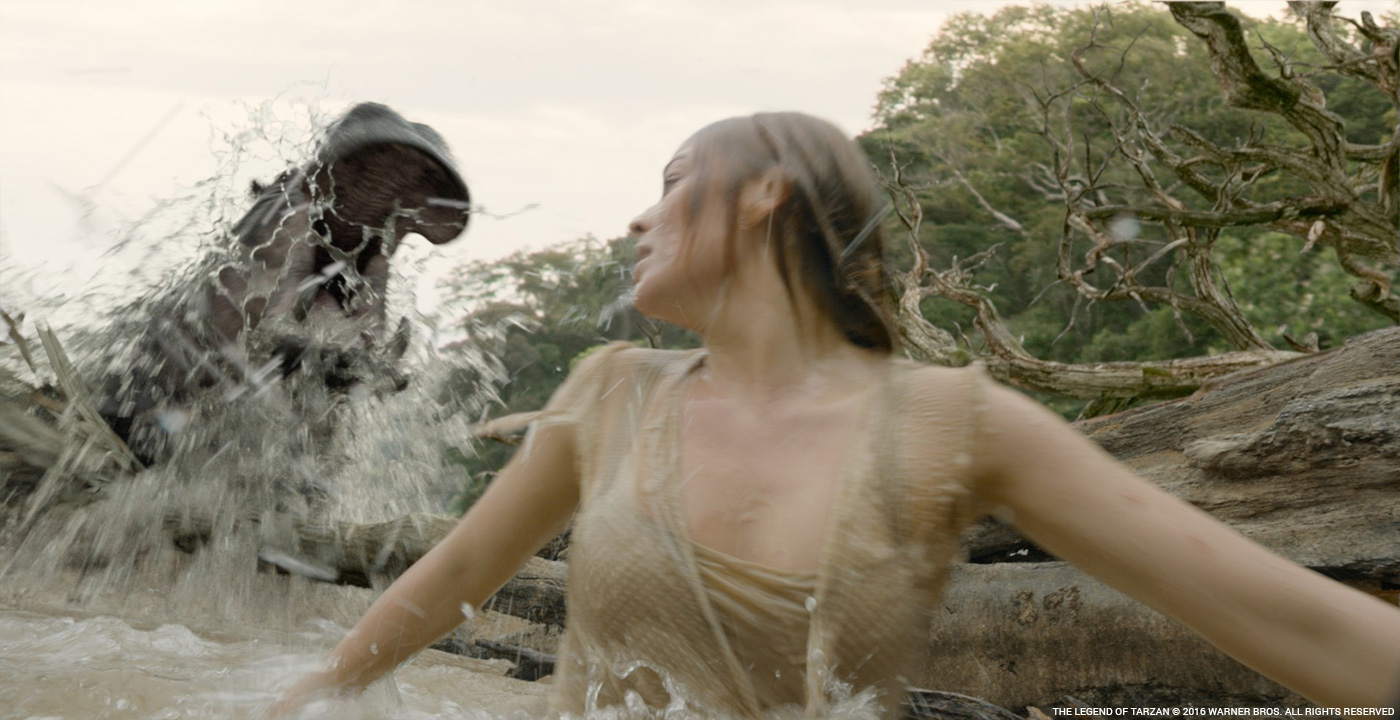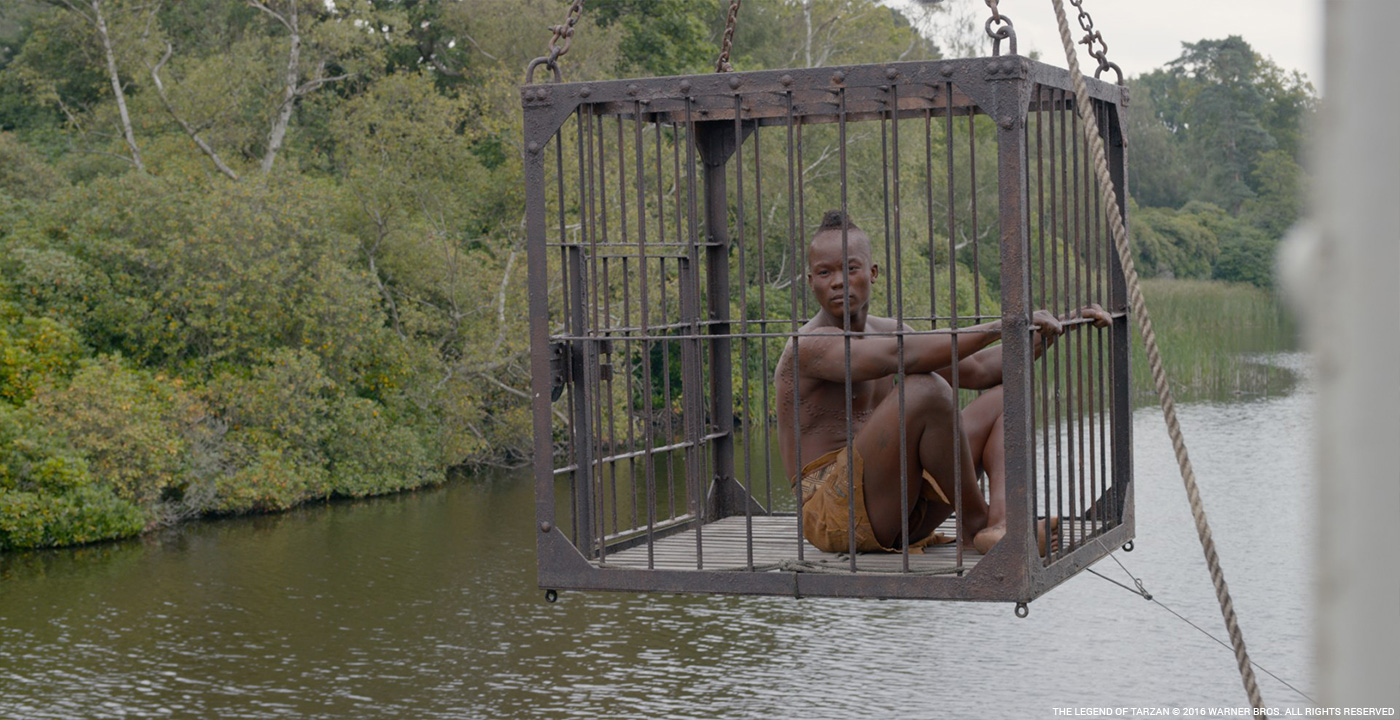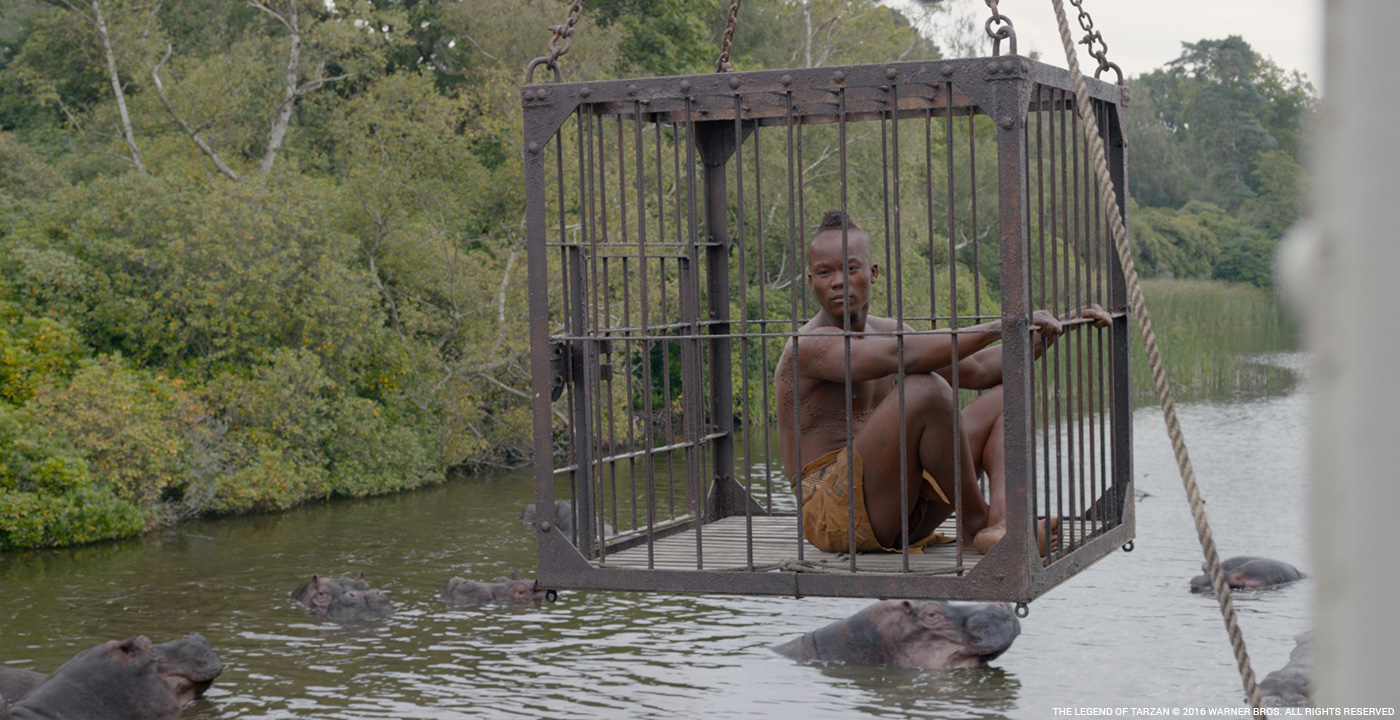Last year, Francois Dumoulin talked to us about the work of Rodeo FX on FANTASTIC FOUR. He then worked on IN THE HEART OF THE SEA. After THE LEGEND OF TARZAN which he explains his work today, he is now working on VALERIAN AND THE CITY OF A THOUSAND PLANETS.
How did you and Rodeo FX get involved on this show?
I was wrapping IN THE HEART OF THE SEA with Warner Bros when they asked us to bid on TARZAN. I must say I was extremely surprised when I found out it was mostly about photo-realistic CG creatures, clearly not something we had done in the past.
I must confess there was a short moment of panic when we got awarded the work, as we were stepping into uncharted territories with A-list clients. It turned out that being entrusted to achieve things you’ve never done before is great creative fuel!
How was your collaboration with director David Yates and VFX Supervisor Tim Burke?
Working with Tim was a truly amazing experience, both from a human and professional perspective. I believe he had a good sense of what we were capable of at that time and the areas where we had less expertise. He paved the way for us and acted like a mentor: patient and encouraging when we were in doubt, enthusiastic when we challenged ourselves. His trust and guidance were instrumental in building self-confidence within the entire team. We never spoke directly to David Yates, but Tim would give us director feedback almost on a daily basis. Overall it has been a super rewarding experience.
What was their approach about the visual effects?
Complete freedom for the narrative, absolute realism for the visual. My initial thoughts, when I was bidding, was they would use some kind of dummy to choreograph the action on set and get the water interactions, the old school way. But David and Tim didn’t want some dummy’s unrealistic movements to drive or constrain the action. So besides the occasional stunt performer in swim suit, when actor interaction made it mandatory, they pretty much decided to clear the frame and let the visual effects team drive the design of the animation. That implied all of the interactive elements would also need to be CG, which raised the bar even more!
As for the look of our creatures, rigging behaviours, shading and simulations they provided us with very specific stock footage references. These animals would sometimes deliver over the top performance, but they needed to look exactly like something out of a National Geographic documentary.
What are the sequences made by Rodeo FX?
Environment work, mostly for London period set pieces. This involved 2d matte paintings for Greystoke castle; CG set extensions for exterior White Hall leading to Trafalgar square (based on Lidar survey of a rather large set built in Leavesden, plus photogrammetric reconstruction of actual London locations). We also did some invisible CG vegetation set dressing, using a combination of Houdini and SpeedTree.
A large amount of green screen shots onboard the paddle steamer, achieved by stitching a custom 6 cameras array of background plates from Gabon. For continuity we augmented those by adding mountains and waterfalls.
Creature work: butterflies, leaf cutter ants used by Tarzan to stitch his wounds, a crowd of hippos plus a hero one attacking Jane, a swarm of crocodiles during the final sequence and a baby croc earlier in the film.
Extensive FX simulation to interact with our CG creatures: large water surfaces with complex interactions and splashes, floating branches and debris, mud and sand.
How did you approach this show?
During pre-production Tim asked us to do some look dev and research around the water interactions. Our VFX DP Robert Bock found a location nearby Montreal that vaguely resembled an African mangrove swamp (at least for people like us with lots of imagination) and shot some plates and HDRIs. We used those and a ragdoll cheesy 3d model of a croc to do proof of concepts and start building our water pipeline. We quickly realized there was lots of different levels of simulation involved, to get the creature sliding from the muddy bank into the water, disturbing both the water volume and the underlying sand, dispersing mud into it, colliding with objects floating on the surface (tiny leaves and debris), getting the skin go from dry to wet, have water ripple beneath the scales… and the list goes on.
At the same time we started gathering lots of documentation on the exact species that were featured in the story. Hours and hours of documentary videos, which we edited down into very short clips of key behaviours, relevant to what was in the script, and that would serve as a bible to the riggers and animators. I had no idea those cute fat hippos were in fact brutally violent creatures!
That’s the first time that Rodeo FX is doing creature work at this level. What were the challenges?
Mostly one: doing creature work at this level!
How was organized the work at Rodeo FX with your CG and 2D supervisors?
As soon as we get awarded a show, I like to sit down with the CG and 2D supervisors (“sups”) and write down a list of development features specific for the show.
We break down this list into 3 categories:
1. Stuff that we absolutely need to deliver the show
2. Stuff that would help optimizing the process
3. Stuff that would be really COOL to try.
By the end of TARZAN we managed to tick almost all of the boxes.
CG Sup Mikael Damant-Sirois and I have been doing a couple of shows together now so I blindly trust him. He oversaw the fruition of the assets on every level, driving both methodology and communication in the CG team. He did all of the super heavy lifting on the show, building the creature pipeline almost from scratch, handling the FX development, bringing the assets to maturity in an “ideal” environment, and then putting them to trial in shot context. This guy deserves all the awards.
When assets started to breathe into shots Patrick David, 2D Sup-er star, came into play. After neutralizing and balancing the grade of the plates, he and his team messed around with the beauty passes and AOV to push lookdev of the assets one step further. Whatever the results from this first pass were, the adjustments got pushed back into lighting and up to asset level if the changes were significant. Patrick would be also responsible for prepping practical elements to act as place holders for FX, and generating temporary backgrounds for the full CG shots, selecting material from the camera array plates of Gabon and using those to create rough layouts of the environment.
This show was also our first experience with ACES color management, and represented a great opportunity to rethink our color pipeline and how we handle client grades versus VFX grades. Along with Patrick, Sebastien Jacob, our Workflow TD and Marie Fetiveau, our color scientist, have developed a bunch of tools and solutions for the show, which made their way to company level as a unified and polyvalent color pipeline.
Can you explain in details about the creation of the hippopotamus and the crocodiles?
Tim [Burke] provided pictures of specific species he wanted us to match and our first models were based scrupulously on those references. David [Yates] would then ask for characterization on facial or body features, to make the beasts look more aggressive or imposing.
Once this “conceptual” model got approved, we would build the skeleton and muscles rig, then adding the skin (and scales for the croc). The hippos also add a layer of fur, which was handled in Houdini.
Since we had crowds of creatures to do, we generated some variations of our hero creatures, altering scale and textures (skin tone, pigmentation, scars).
How did you handle their rigging and their animation?
Our initial rigs were tested through generic animation cycles, based again on reference footage. Idle standing, idle in water, walking, running, swimming, etc. These were also presented to David and Tim: is the skin too flappy here? Do we want thicker muscles there? Is the head bouncing too much?
The next step was to push our rigs to extreme poses, and see how it impacted textures and topology. The crocs for instance have super flappy skin under the neck and very rigid scales above it; we had to make sure those would not stretch. The hero hippo is featured in extreme close up shots, so we had a separate high-resolution rig for the face that included detailed controllers for the eyes and a completely modeled mouth interior with tusks, teeth and tongue.
Can you tell us more about the shading and textures work?
Once again: references, references, references.
Both the crocs and the hippos were shaded with different scenarios in mind: fully dry, partially emerged with dripping water on dry skin, fully wet. Oh, and there was also a layer of dry mud on top of the skin that would dissipate in contact with water. We decided to include the wet maps directly into the shading model as opposed to having different shaders that would be combined as a post process. The water level and fluid simulations were driving these wet maps.
Those creatures are interacting a lot with water. How did you manage these simulations?
First of all, we wanted our CG water to perfectly replicate the water from the plates. Plates were from 3 different sources: the water tank in Leavesden (no current and localized turbulences), a river in England (slow current with very high frequency ripples), and plates from Gabon (fast current with lots of large turbulences).
Later on in the project we were asked to replace some of the tank or river water with full CG water, for continuity reasons, but our initial task was always to get a perfect match with the original plate.
We created a specific water surface for each of the 3 locations, which would stand as a starting point for every single shot, matching frequency, velocity and turbulences, using a Tessendorf algorithm (that’s the mathematical description of a water surface, based on the theories of Jerry Tessendorf). Then we would put our creatures into the Tessendorf and run a simulation for the collisions with the surface. This provided us with ripples and wakes based on the water current. On top of that we also had a layer of floating elements. Those were particles advected by the simulation: branches, leaves, foam, etc. A velocity and vorticity channel would drive how the CG water would blend into the original plate water in compositing. The more active the water gets, the more CG it is. Less energy would reveal more of the initial plate.
For the complex/hero water events, every time a creature was displacing a large amount of water, generating waves and splashes, we relied on a full Houdini simulation. Considering that some of the shots covered a very large area, we ended up with some really heavy scenes. But Mikael and Thomas Hullin, rock star Houdini mastermind, handled those with absolute brilliance. Tim happened to be with us in Montreal when the first renders came out and he was happily impressed with the results. The final step was the shading of the water: simulation caches were exported as alembic files and rendered together with the creatures, reflection and diffraction of the background plates. Dealing with sand and mud used most of the above rules, plus an animated UV map of the deformed terrain mesh to blend with the plate.
What do you keep from this experience?
Animation dailies are fun, especially when it comes to mimicking animals.
And starting a show thinking “we can’t do this, can we?” is a lot of fun too.
How long did you work on this film?
We started prep and asset building during the summer 2014, and delivered the last additional shots in the spring 2016. It lasted almost 2 years!
How many shots did you do?
We had a team of 65 artists, plus 10 wizards for support and production, who worked on a total of 198 shots.
A big thanks for your time.
// WANT TO KNOW MORE?
– Rodeo FX: Dedicated page about THE LEGEND OF TARZAN on Rodeo FX website.
© Vincent Frei – The Art of VFX – 2016


